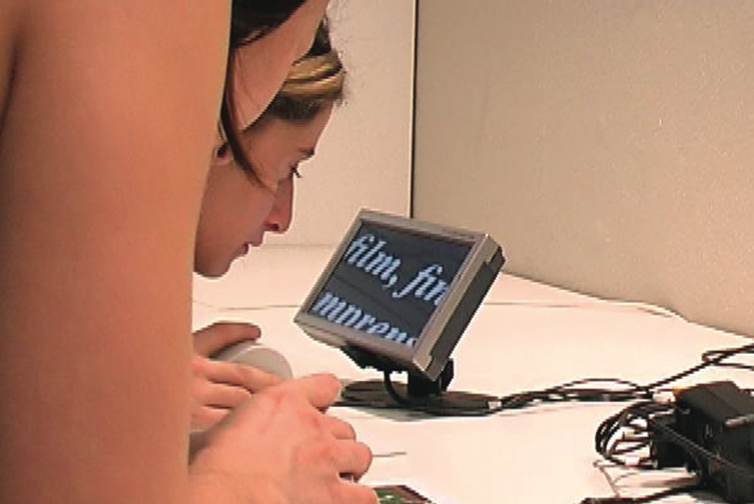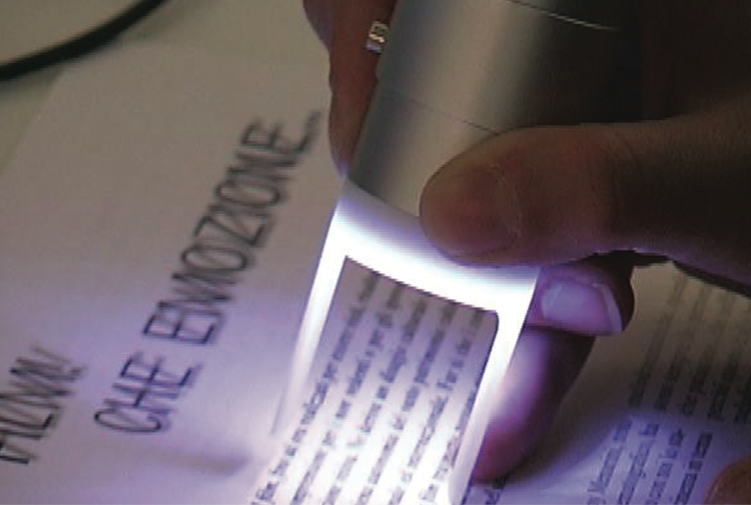.png) Back to reading when it no longer seemed possible. This may be the happy outcome of a process of rehabilitation undertaken in low vision centres. Some eye diseases in their advanced stages can unfortunately have various effects, one of which is the difficulty to read. Macular degeneration is a typical example: due to the reduction of central vision, it becomes extremely difficult to recognize the small letters that make up words. Maculopathies are found in youth and in older adults. Age-related macular degeneration is now considered, given its incidence in the elderly population, the leading cause of low vision in our country. Fortunately, even in very severe cases where, for example, visual acuity is below 1/10, targeted interventions are possible with the help of visual rehabilitation. This will allow patients to learn new strategies that will enable them to use their residual vision as much as possible. The use of optical and electronic magnification devices makes images more visible and therefore more accessible even for people who have lost their ability to normally see. The improvements that occur through visual rehabilitation are based on the ability to learn that the brain maintains throughout life. In response to the injury caused by the ocular damage, a reorganization of the visual system takes place at various levels. With targeted training, it becomes possible to enhance residual visual skills. The choice of devices to be used will then need to be made with extreme care. Professional and patient communication is very important at this stage: it is necessary to accurately identify the actual needs, abilities and expectations of the person referred to a vision rehabilitation centre.
Back to reading when it no longer seemed possible. This may be the happy outcome of a process of rehabilitation undertaken in low vision centres. Some eye diseases in their advanced stages can unfortunately have various effects, one of which is the difficulty to read. Macular degeneration is a typical example: due to the reduction of central vision, it becomes extremely difficult to recognize the small letters that make up words. Maculopathies are found in youth and in older adults. Age-related macular degeneration is now considered, given its incidence in the elderly population, the leading cause of low vision in our country. Fortunately, even in very severe cases where, for example, visual acuity is below 1/10, targeted interventions are possible with the help of visual rehabilitation. This will allow patients to learn new strategies that will enable them to use their residual vision as much as possible. The use of optical and electronic magnification devices makes images more visible and therefore more accessible even for people who have lost their ability to normally see. The improvements that occur through visual rehabilitation are based on the ability to learn that the brain maintains throughout life. In response to the injury caused by the ocular damage, a reorganization of the visual system takes place at various levels. With targeted training, it becomes possible to enhance residual visual skills. The choice of devices to be used will then need to be made with extreme care. Professional and patient communication is very important at this stage: it is necessary to accurately identify the actual needs, abilities and expectations of the person referred to a vision rehabilitation centre.  At the Technology Help Centre of the Istituto Cavazza, it is possible to do a hands-on experience with a variety of devices, many of which may first look similar, but are in reality different, as their characteristics will match various needs and functions. The magnifying tools for reading are divided into: magnifying lenses which can be hand-held or built into the eye wear; telescopic systems,
At the Technology Help Centre of the Istituto Cavazza, it is possible to do a hands-on experience with a variety of devices, many of which may first look similar, but are in reality different, as their characteristics will match various needs and functions. The magnifying tools for reading are divided into: magnifying lenses which can be hand-held or built into the eye wear; telescopic systems,

electronic magnifiers (electronic systems consisting of a camera that captures print matter or images and reproduce a magnified image on a monitor); and software that provide greater access to computer screen content. The choice of the device will be based on several factors, the most important being the degree of magnification. User-friendliness and portability are also elements to be taken into account. Generally, a person who has low residual vision and who absolutely wants to read for long periods of time will preferably use an electronic magnifier which, in addition to allowing greater magnification levels, can change the characteristics of the print material. For example, if strong brightness is a problem (photophobia), it is possible to change the background of the text, thus reducing the degree of light emission and consequently eye fatigue. A good advice would be to always turn to a specialized centre in the field. Maintaining autonomy in reading is a valuable asset that contributes to a high quality of life.




.png)